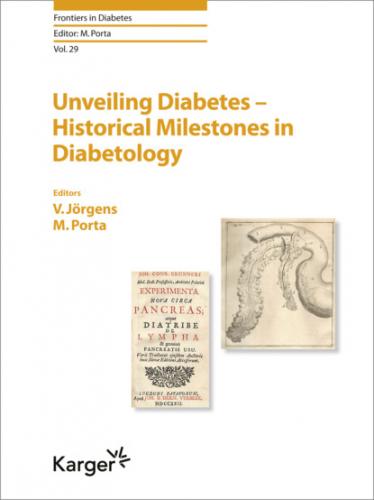Fig. 6. Birth certificate of Minkowski’s son Rudolph (online birth registry, Strasbourg).
Fig. 7. Augusta Hospital in Cologne, where Minkowski worked from July 15, 1900 to March 31, 1904 (postcard, collection Dr. Jörgens).
The Minkowski family must have enjoyed a pleasant time in Cologne. Their home was an impressive villa, walking distance from the Augusta hospital, located on Mozart Street 28. It is detestable to know that, this once-magnificent abode of a Jewish-born scientist, later became the regional headquarters, or “Gauleitung,” of the National Socialist German Workers Party (it became known in Cologne as the “brown house”) and also the headquarters for SA and SS.
Nevertheless, Cologne was just a medical academy and Minkowski was, for all intents and purposes, looking for a position in a recognized university. Eventually he was called for the chair of internal medicine in Greifswald – a small university on the Baltic Sea. Although Minkowski had some initial problems finding a suitable apartment for his family in Greifswald, he finally found an appropriate residence in Bahnhofstrasse 48/49.
Naunyn, his “scientific godfather” took a hand in Minkowski’s career. He wrote a letter to the imperial ministry of research in Berlin criticizing the fact that a renowned researcher, such as Minkowski, was working in such an irrelevant place like Greifswald. His grievances were heard and, in 1909, Minkowski was nominated in the prominent university of Breslau, the capital of Silesia, where he worked until his retirement in 1926 (Fig. 8).
Fig. 8. Prof. Oskar Minkowski in Breslau (photo collection Dr. Jörgens).
Fig. 9. Vossische Zeitung, Berlin June 21, 1931.
Minkowski and his team were very successful scientifically. Minkowski later regretted only one major mistake during his career as a researcher, namely that he had missed the discovery of insulin. The analysis of Zülzer’s extract should have attracted his attention – but he paid little attention to this work and later regretted it, very much. The full story about Zülzer’s extract is recounted in the chapter by V. Jörgens [this vol., pp. 58–63].
During his time in Breslau, Minkowski became one of the leaders of German Internal Medicine. When the German government decided to send a team of the best German physicians to Moscow to support the care of Lenin, Minkowski was one of those chosen.
Fig. 10. Cemetery Heerstrasse in Berlin Charlottenburg. Professors Hermann and Oskar Minkowski (photo Dr. Jörgens).
Oskar Minkowski was nominated six times for the Nobel Prize for physiology and medicine, but not in the year when the prize for the discovery of insulin was awarded. The first German insulin committee to monitor the quality of insulin preparations elected him as its chairman.
Fig. 11. Minkowski Street in Wrocław (the former Breslau), Prof. Leszek Czupryniak (photo Dr. Jörgens).
Fig. 12. Oskar Minkowski Prize of the European Association for the Study of Diabetes (photo EASD).
After his retirement in 1926, Oskar Minkowski moved, with his wife, to Wiesbaden for a time. However, the couple eventually decided to move to Berlin where their daughter lived with her family. It was here that Minkowski caught pneumonia and, in a hospital in Fürstenberg on the Havel headed by one of his former students, he died on June 18, 1931 (Fig. 9). Today, within walking distance of the Nazi concentration camp of Ravensbrück, stands a commemorative memorial monument to Minkowski. Oscar Minkowski’s tomb, together with that of his brother Hermann, is located in the cemetery Heerstrasse in Berlin (Fig. 10).
Paul Morawitz, chairman of the German Congress of Internal Medicine, honored Minkowski in his opening speech in 1932: “With Oskar Minkowski we have lost one of our greatest. As a young assistant in Königsberg, he found β-hydroxy butyrate in the urine of diabetics. In Strasbourg, the 30-year-old discovered pancreatic diabetes in collaboration with von Mering. The discovery of hemolytic icterus was his third great achievement. There have been few clinicians whose life’s work can be compared to that of Oskar Minkowski. He attended our Congress beginning with its first session in 1882, one of the most faithful members. How often he spoke here! When his awe-inspiring figure entered the lectern, there was attentive silence: ‘The discoverer of pancreatic diabetes speaks! A great historical moment!’ Until the end we could admire in him – those qualities which made his successes possible: the crystal-clear mind, without any mysticism, his sharp criticism and at the same time that touch of fantasy – that artistic touch one needs to become an outstanding researcher… His works will live when all those who knew him face to face are no longer there” [14].
In 1938, Minkowski’s daughter, Laure Minkowski, forced by the odious policies of the Nazi government, opted to emigrate from Germany together with her husband and two sons. They settled in Buenos Aires, where Laure struggled to organize the emigration of her mother. On the last day of 1940, with the help of the Banting Society and the support of the Noble Prize winner Prof. Bernardo Houssay, who lived in Buenos Aires, Oskar’s widow, Marie Siegel Minkowski, was able to leave Germany to join her daughter in Argentina. Laure passed away in Buenos Aires in 1983 [15].
Minkowski’s son, Rudolph, earned his PhD in physics, and went on to become an astrophysicist. He left Germany in 1935 to take up a position at the Mount Wilson Observatory in California. Rudolph went on to become a well-known radio-astronomer and even has a protoplanetary nebula named after him, the Minkowski’s Footprint (Minkowski 92), located in the constellation of Cygnus.
The entire Minkowski family played an outstanding role in European science. They stand for innovative
